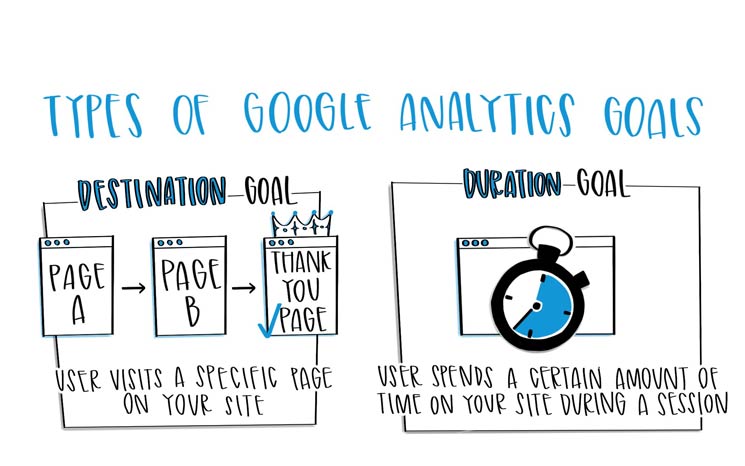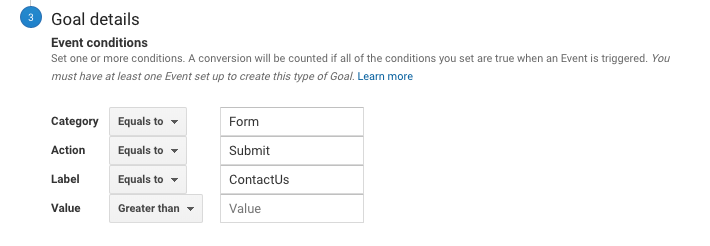Trick Insights on What Data Is Google Analytics Goals Unable to Track
Trick Insights on What Data Is Google Analytics Goals Unable to Track
Blog Article
Revealing the Blind Attractions: Recognizing What Google Analytics Goals Can not Gauge
In the realm of digital analytics, Google Analytics stands as a powerful device for monitoring and analyzing online user interactions. However, amid its durable capacities, there exist blind places that often evade dimension. Comprehending what Google Analytics goals can not measure is crucial for gaining an extensive view of user behavior and involvement. As we explore the ins and outs of these dead spots, we uncover a complex internet of undiscovered areas that hold important insights into customer activities and inspirations, challenging conventional wisdom and clarifying the constraints of our data-driven understanding.
Individual Behavior on External Operatings Systems
Recognizing exactly how users engage on external platforms is critical for enhancing on-line techniques. Exterior platforms, such as social media sites networks, reference sites, and on-line forums, play a substantial role in driving website traffic to a company's web site. By analyzing individual actions on these platforms, organizations can gain useful understandings into the efficiency of their advertising and marketing efforts and the preferences of their target market.
One key element of customer behavior on outside systems is the reference source. By tracking where the individuals are originating from, organizations can identify which platforms are driving one of the most traffic to their internet site. This information can help companies designate their sources more efficiently, concentrating on the systems that generate the most effective results.

Offline Conversions and Communications
Assessing user actions on external platforms offers important insights into online strategies; nevertheless, thinking about offline conversions and interactions is just as essential for a comprehensive understanding of a company's overall performance. While Google Analytics excels at tracking on the internet interactions, it drops brief in recording the complete consumer journey that frequently includes offline touchpoints. Offline conversions, such as in-store acquisitions or phone questions, play a substantial function in numerous companies' success. Ignoring these communications can cause a distorted sight of the efficiency of advertising campaigns and total company efficiency.

Acknowledgment Beyond Last Click
When diving into the realm of digital advertising analytics, it comes to be necessary to look beyond the solitary touchpoint of the last click for an extra comprehensive understanding of acknowledgment. While Google Analytics offers beneficial insights right into customer actions, relying exclusively on last-click acknowledgment can be limiting - what data is google analytics goals unable to track. Attribution versions that surpass the last click supply a more nuanced sight of the client journey, thinking about all the touchpoints that bring about a conversion
Acknowledgment beyond the last click enables marketing experts to designate credit score to different communications along the conversion course, giving a more clear picture of the efficiency of different marketing networks. By discovering multi-touch attribution models such as straight, time degeneration, or position-based attribution, companies can better allot their advertising budget plans and optimize their approaches for optimal impact.
Recognizing the impact of each touchpoint in the conversion process is crucial for making educated decisions and taking full advantage of ROI. By embracing acknowledgment beyond the last click, organizations can get deeper understandings into consumer habits and tailor their advertising initiatives better.
Cross-Device and Cross-Browser Monitoring
In a similar way, cross-browser tracking matches cross-device tracking by capturing individual habits as they switch over in between various web internet browsers. Understanding how customers communicate with websites on different web browsers can assist marketing professionals enhance their online experiences to ensure uniformity and performance throughout various platforms.
Qualitative Data and Customer Intent
Understanding user intent through qualitative data analysis is vital for creating targeted electronic advertising and marketing approaches that reverberate with the demands and choices of the target market. Qualitative information supplies insights into the 'why' behind user actions, clarifying inspirations, feelings, and choices that quantitative data alone can not record. By analyzing customer responses, remarks, and interactions, marketing professionals can discover useful info about customer intent, permitting them to tailor their messaging, content, and offerings to better straighten with what their target market is seeking.
Qualitative data additionally assists in understanding the context in which customers involve with a site or app. This contextual understanding makes it possible for marketing professionals to produce even more tailored and appropriate experiences, inevitably driving higher involvement and conversion rates. By diving into user intent via qualitative data evaluation, services can acquire a much deeper understanding of their target market, resulting in extra reliable marketing strategies that satisfy users' assumptions and needs.
Verdict
Finally, Google Analytics goals have constraints in measuring customer behavior on exterior platforms, offline conversions, acknowledgment beyond last click, cross-device and cross-browser monitoring, and qualitative data associated to user intent. what data is google analytics goals unable to track. It is very important for businesses to be conscious of these unseen areas in order to supplement their information analysis with other devices and techniques to obtain a more thorough understanding of their audience and boost their overall electronic marketing techniques
By assessing individual actions on these platforms, organizations can acquire useful insights into the efficiency of their advertising and marketing initiatives and the preferences of their target audience.
Evaluating my sources user behavior on outside platforms gives useful understandings into on-line approaches; however, thinking about offline conversions and interactions is similarly imperative for an extensive understanding of a business's general performance.In digital marketing analytics, moving beyond last-click attribution to explore cross-device my review here and cross-browser monitoring is essential for gaining a holistic understanding of user interactions throughout numerous systems and gadgets. By examining individual comments, comments, and interactions, marketing professionals can discover important information about customer intent, permitting them to customize their messaging, material, and offerings to better straighten with what their target market is looking for.
By diving into user intent via qualitative information analysis, businesses can get a deeper understanding of their target audience, leading to more reliable advertising and marketing methods that meet customers' demands and expectations.
Report this page